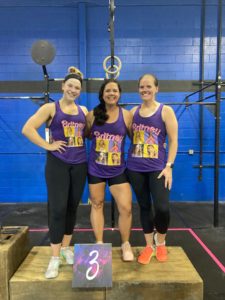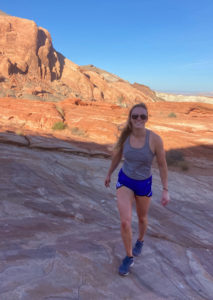If you’ve been doing CrossFit for a while or have simply been in the fitness space, then you have probably heard the phrase ‘counting macros’ time and time again. It is a phrase that is often used in conversations about nutrition and often the questions, ‘Do you count your macros?’ or ‘What are your macros?’ are common inquiries in a typical CrossFit gym. But what are macros exactly? “Macros” are short for macronutrients and there are 3 types: protein, carbohydrates, and fat. Each of these are essential for a healthy, well-balanced diet. Let’s take a look at each of these individually to get a better idea of why they are important.
Protein
Why is protein important? It is involved in many of our body’s basic functions, such as the repair and rebuilding of tissues, hormones, and our immune system. For the average, sedentary, generally healthy adult, they need about 0.8g of protein per kg of body mass to cover basic daily requirements. However, this is just the recommended amount for basic protein turnover and preventing malnutrition. It is not necessarily optimal.
An individual’s protein needs will increase if they are training hard frequently or have a heavy physical job; if they are injured or sick or are recovering from surgery; if they are older (you don’t digest protein as well when you’re older so you need more to meet the basic requirements); or if they’re losing protein for some other reason. Individuals may need more protein if they are trying to lose weight because it can put them in a negative energy balance (protein helps them feel full longer).
Some good sources of protein include:
- Beef, bison, and buffalo
- Chicken and turkey
- Fish
- Eggs and egg whites
- Cottage cheese or strained Greek yogurt
- Beans and legumes
- Protein powder
So, now that we know protein is good for us and we need it for basic daily functions, how much do we actually need? You can use your hands as measuring tools. For most people, try eating 1 to 2 palm-size portions of high-protein foods per meal. For highly active people, try eating 2 to 3 palm-size portions per meal.
Carbohydrates
Carbs are not the enemy! In fact, they are necessary for giving our body the energy it needs to function and perform at an optimal level. There are several different types of carbohydrates:
- Complex carbohydrates –
- They come from whole-food sources like vegetables, fruits, legumes, and whole grains.
- They tend to keep us feeling full longer.
- They also supply micronutrients, phytonutrients, fiber and water.
- They keep our blood sugar and insulin levels stable while releasing their energy gradually.
- Simple, refined, and highly processed carbohydrates –
- They digest quickly but tend to leave us feeling unsatisfied.
- They have been stripped of nutrients and tend to carry sodium and industrial chemicals.
- They stimulate our appetite and leave us wanting more.
- They can cause fluctuations in our blood sugar and insulin levels.
The amount of carbs that an individual needs is based on several different factors:
- How big or small someone is
- How much lean mass or body fat they have
- How active they are
- How intense, long-lasting, and/or frequent that activity is
- How old they are, and what stage of life they’re at
- Intake levels of other macronutrients
- Genetics
- What foods they like, tolerate, and prefer to eat
When choosing what carbs to eat, keep the following ideas in mind: We thrive best on a mix of carbohydrate types that occur naturally (keyword – naturally) in different types of foods. In most cases, we want to eat relatively slower-digesting, higher-fiber carbohydrates, which we can get if we choose a wide selection of diverse, whole, less-processed foods, such as fruits and root vegetables, whole grains, and beans and legumes. Occasionally, faster-digesting, lower-fiber carbohydrates can be helpful, particularly for athletes or people looking to gain weight.
How many carbs should you eat daily? As a starting point, try to eat 1 to 2 cupped handfuls of carbohydrates per meal. For highly active people, try eating 3 or more handfuls of carbohydrates per meal or adding more meals (since larger portions can be hard to digest in one sitting).
Fat
Most people tend to stay away from fat in their diets because they think that it is what causes them to gain weight. However, this is not necessarily the case. Fat has several important jobs in the body and is therefore a necessity of a well-balanced diet. Dietary fat has 6 major roles:
- It provides us with energy (in fact, it is the most energy-dense macronutrient).
- It helps make and balance hormones, particularly our steroid hormones.
- It forms cell membranes.
- It forms our brain and nervous system.
- It helps transport important vitamins.
- It gives us two fatty acids that we can’t make on our own.
See? Fat is extremely important!
Some healthy sources of fat include:
- Avocado and avocado oil
- Cacao (dark chocolate)
- Fresh coconut and coconut oil
- Nuts and seeds
- Olives and extra virgin olive oil
We know that fat is good for us, but we also want to make sure that we aren’t eating too much fat. Once again, you can use your hand as a measuring tool. For most people, they only need 1 to 2 thumb-size portions of fat-dense foods per meal. For highly active people, they need to be eating 2 to 3 thumb-size portions of fat per meal.
In summary, it is important to remember that we eat foods and meals, not nutrients. Therefore, eating a wider variety of whole foods will increase your chances of eating a more balanced, nutrient-dense diet. Each individual person will need a different amount of macros – there is not a one diet fits all approach, and their macro intake will depend on a variety of different factors.
 Each month Overland Park CrossFit recognizes a member who exemplifies our values and motivates others in the gym to push themselves with encouraging words. September’s Athlete of the Month is Elizabeth Dollins. She was chosen because of her evident commitment to her health and fitness. She puts this on display by making class attendance a high priority, pushing herself to do heavier weights and more difficult gymnastics movements in metcons, and constantly striving to improve her technique. She is super encouraging to all of the members in her class and her positive attitude and awesome dance moves shine through! Her hard work is paying off and we love having Elizabeth as a part of our OPCF community!
Each month Overland Park CrossFit recognizes a member who exemplifies our values and motivates others in the gym to push themselves with encouraging words. September’s Athlete of the Month is Elizabeth Dollins. She was chosen because of her evident commitment to her health and fitness. She puts this on display by making class attendance a high priority, pushing herself to do heavier weights and more difficult gymnastics movements in metcons, and constantly striving to improve her technique. She is super encouraging to all of the members in her class and her positive attitude and awesome dance moves shine through! Her hard work is paying off and we love having Elizabeth as a part of our OPCF community!


 Each month Overland Park CrossFit recognizes a member who exemplifies our values and motivates others in the gym to push themselves with encouraging words. August’s Athlete of the Month is David Doell. He was chosen because of his obvious dedication to making fitness a priority and always striving to do his best when he’s in class. It is evident that he wants to get better and he takes the time to learn how to do the simpler movements correctly before trying to advance to something more difficult. This level of patience and perseverance is very admirable. His hard work is paying off and we love having David as a part of our OPCF community.
Each month Overland Park CrossFit recognizes a member who exemplifies our values and motivates others in the gym to push themselves with encouraging words. August’s Athlete of the Month is David Doell. He was chosen because of his obvious dedication to making fitness a priority and always striving to do his best when he’s in class. It is evident that he wants to get better and he takes the time to learn how to do the simpler movements correctly before trying to advance to something more difficult. This level of patience and perseverance is very admirable. His hard work is paying off and we love having David as a part of our OPCF community.
 Each month Overland Park CrossFit recognizes a member who exemplifies our values and motivates others in the gym to push themselves with encouraging words. July’s Athlete of the Month is Sara Hoffman. She was chosen because it is evident that her health and fitness are important to her because of how she prioritizes working out even with a busy work schedule. She has made great improvements in her movement patterns by listening to the coaches and trying to implement the cues they give her. She is very active in the OPCF community, participating in events that take place outside of the gym, as well as being encouraging to the other members in her class. Her hard work is paying off and we love having Sara as a part of our OPCF community.
Each month Overland Park CrossFit recognizes a member who exemplifies our values and motivates others in the gym to push themselves with encouraging words. July’s Athlete of the Month is Sara Hoffman. She was chosen because it is evident that her health and fitness are important to her because of how she prioritizes working out even with a busy work schedule. She has made great improvements in her movement patterns by listening to the coaches and trying to implement the cues they give her. She is very active in the OPCF community, participating in events that take place outside of the gym, as well as being encouraging to the other members in her class. Her hard work is paying off and we love having Sara as a part of our OPCF community.

 Each month Overland Park CrossFit recognizes a member who exemplifies our values and motivates others in the gym to push themselves with encouraging words. June’s Athlete of the Month is Moses Nganga. He was chosen because he has really embraced a hard-working mentality. He consistently shows up to class, he is conscious about his nutrition habits, and he is determined to perform the movements correctly and with good form. He has made some really good progress since he’s been here and that can all be attributed to his dedication and perseverance. His hard work is paying off and we love having Moses as a part of our OPCF community!
Each month Overland Park CrossFit recognizes a member who exemplifies our values and motivates others in the gym to push themselves with encouraging words. June’s Athlete of the Month is Moses Nganga. He was chosen because he has really embraced a hard-working mentality. He consistently shows up to class, he is conscious about his nutrition habits, and he is determined to perform the movements correctly and with good form. He has made some really good progress since he’s been here and that can all be attributed to his dedication and perseverance. His hard work is paying off and we love having Moses as a part of our OPCF community! What advice would you give a newbie just starting at OPCF? Be patient with yourself in regards to seeing results; be consistent and eat healthy.
What advice would you give a newbie just starting at OPCF? Be patient with yourself in regards to seeing results; be consistent and eat healthy.
